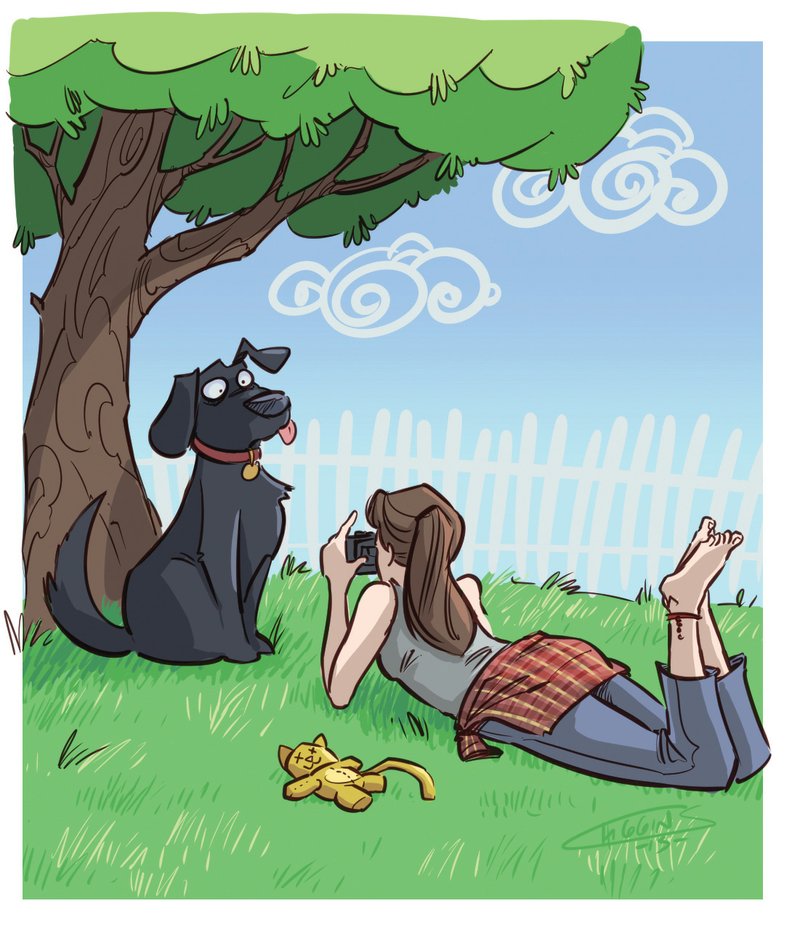I adopted a beautiful black Lab mix from the animal shelter. I want to post photos of her on Facebook and my blog. But she looks like a blob in my pics. I have trouble getting her eyes to show up. Any ideas on how to get nice pictures of my girl?
Getting good photographs of a black dog can be a challenge, but it's definitely do-able with a few simple tricks when setting up your shots.
Light presents the trickiest issue when shooting photos of black dogs because their dark fur tends to absorb rather than reflect light. If the dog has brown eyes, which most do, they often get lost in the picture because of lack of contrast.
Here are a few suggestions from Dummies.com, Facebook.com and experience with my black Pomeranian, Simone.
• Shoot outdoors. Natural lighting is always best. The combination of shooting indoors and using a flash can make a black dog's coat look overly shiny and unnatural. You might also lose definition and, hard as it is to believe, a flash can make even an ebony dog look washed out. Using a flash can also result in a dog's eyes turning white or red. That's fine if you're going for a zombie-dog look, but most of us aren't.
• If you can't shoot outdoors, the next best thing is indoors in a room with lots of windows and natural light. However, pay attention to the positioning of the light. If it's directly behind the dog, you'll get a backlight effect that results in the dreaded black-dog photo syndrome. You may get the same effect if shooting the dog against a very light or white background. In contrast, photograph against a too-dark background and the dog will disappear.
Try using different colors as a backdrop; your dog may look great against a bright blue, for instance. Before shooting, look at your dog's image in the camera's preview window from several angles.
• When outdoors, don't shoot in direct sunlight or when the sun is high in the sky. I always got the best shots of my glossy-haired Pomeranian under an oak tree in the backyard during midafternoon. Light, even shade (not dappled) works best with black dogs because there's enough brightness to pick up details and contrast, but not so much that the subtle gradients of black are lost.
• Add a bright collar or scarf for contrast.
• Aim for the eyes when focusing.
• Don't be afraid to shoot lots of photos. The more photos you shoot, the more chances you'll have to get good shots.
These tips from Dogster magazine for shooting shareable photos of any dog also apply to black dogs:
• Zoom in or go for a close-up to get extreme facial expressions. In close-ups, remember the rule about avoiding the flash to prevent zombie or demon eyes.
• Add a prop such as a favorite toy or a stuffed animal.
• Posed shots can be cute, but photos of a dog acting like a dog can be the most appealing.
• Praise and pet the dog when he does well. If he's food-motivated, reward him with a treat.
• Keep photo sessions short and give the dog plenty of breaks.
• Get down on the dog's level instead of shooting from above. When photographing my tiny dog (about 10 inches tall), I frequently sat or even stretched out on the ground so that I could really capture her personality. While down there, I got a good idea of how the world appeared from her view.
• Use a squeaky toy or talk to your dog to get his attention. Simone held her ears high, tilted her head and looked at me curiously when I meowed (she liked cats), which resulted in a cute, photogenic expression.
• Experiment. Have fun. Also, make sure your dog has fun and chances are that he'll get excited when he sees you bring out the camera.
Family on 04/08/2015
